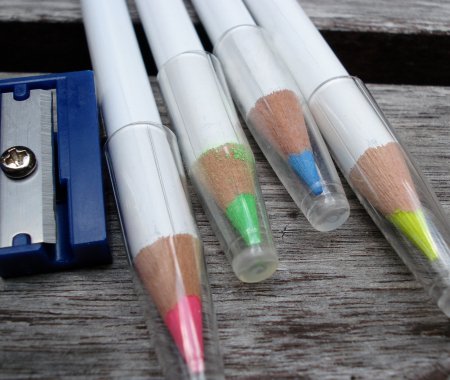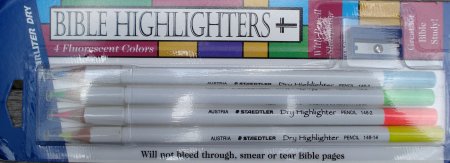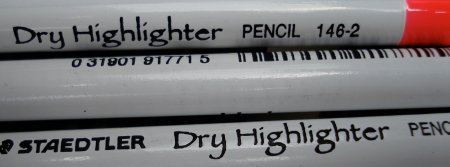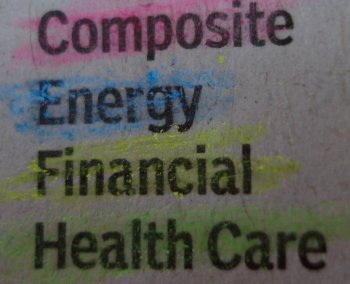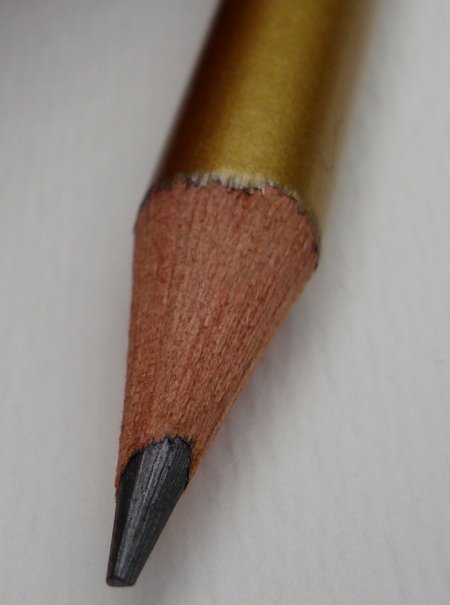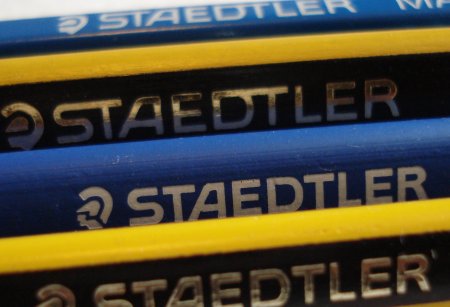
pencil talk has had ongoing comments on the Staedtler 134 yellow pencil. The 134 is apparently a standard pencil in many Asian countries, yet it is absent from Staedtler’s websites. The pencil is not sold in North America.
The name is just a bit odd – it is clearly a yellow pencil – so why call it “yellow pencil”? This somehow reminds me of “No name” brand products, and those establishments calling themselves “Le Café”, “The Bar”, and so on.
It’s a delight to finally get some of these pencils for my own examination.
Let me mention something as an aside – I’m well aware that this blog is only covering a fraction of the world’s pencils. Many countries have national pencil industries that don’t generally export their products. I wish there was an easy way to get pencils from Conté, Lyra, or the Hindustan Pencil Co., just to name a few.
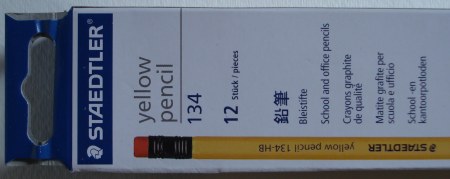
So let’s start with the outside packaging. My pencils don’t say where they were made – just “Manufactured for STAEDTLER Nuernberg, Germany”. While no statement of origin usually means “Made in China”, the packaging version shown at PenciLog explicity says they are made in China.
Though the German says “Bleistifte” (pencils), and the French “Crayons grafite de qualité, (quality graphite pencils), the English says “School and office pencils.”
Uh-oh. “school” and “office” often mean “the cheapest we could get away with”. Why do people in schools and offices deserve the worst stuff?
The pencils actually look great, with black printing on a dark yellow base, black ferrule, and pink eraser.
They are marked:
Obverse: [logo] Staedtler yellow pencil 134-HB
After sharpening them, a mismatch is revealed. Though the finish is superior – the lead is just another not terrible, but not great, somewhat scratchy lead.
They sharpen easily in a Tombow longpoint sharpener. I don’t know the constituent wood.
Now some of the people who have commented on this pencil have also asked – what is the difference between pencils, and why are some pencils so much more expensive.
I’ll try and give a partial answer.
If your pencil use is sporadic – jotting down an occasional address or phone number, I think any old pencil might do. The 134 would be more than up to the task.
But if you’re using a pencil as a regular writing tool for work or school – the difference between a great pencil like the Tombow Mono 100 and the Staedtler 134 is remarkable and immediately apparent. (Honestly, you can still take advantage of a great pencil even if you’re just jotting down phone numbers.)
The lead is so smooth and applies in such a way that the pencil “gets out of your way”. You don’t have to think about the pencil, and can more directly think about whatever you’re really working on.
While writing, pencils last a long time. The most extreme example I can think of is someone liking a very soft pencil, in combination with a sharp point. This can result in using half, or even a whole pencil in a day.
Yet even in that extreme case, with the highest quality pencils, this cost is negligible compared to other typical office or school expenses – computers, printing, lighting, electricity, copying, paper, etc. If you work in a downtown office tower, the square footage consumed by your deskside blue bin probably costs more than an ongoing supply of Hi-Unis.
And also keep in mind – a Japanese pencil in North America has a very inflated price, but in Japan, they have regular pencil prices.
Now for an artist, the answer is much easier – smooth, dark, consistent, non-crumbling, non-breaking, high quality graphite is worth it. And being 10 or 15% better than an alternative may be worth a significant premium. In some cases, tools that are 1% better may be desirable.
So our Staedtler 134 looks great, but trying it side by side with Staedtler’s flagship Mars Lumograph 100, it is only so-so. The darkness of the 134 in HB is more like a 2B in many pencils – probably a bonus for writing.
I’m curious about the origin and history of this pencil.
Related Post: Staedtler 132 pencil

